Czech Nymphing: Dell Neighbours Talks Tactics & Rigging with G&G
For a while now, we’ve been getting requests from G&G readers about writing a Czech nymphing post. It’s a subject we’ve wanted to tackle on the blog for a while now, but neither Louis or I specialize in Czech nymphing. Furthermore, we’re not the kind of guys that write about fly fishing topics that we’re not experienced with. When we find ourselves in this position, we go out and talk with the professionals who are, gather the information, and then bring it back to you. Dell Neighbours, head fly fishing guide for Reel Job Fishing, is highly competent in Czech nymphing, and he’s volunteered to talk with us today about Czech nymphing tactics and his rigging recommendations.
First, let’s talk about the type of fly rod I prefer to use when I’m Czech nymphing. I find that long and light fly rods work the best, with my favorite Czech nymphing rod being the Echo Shadow PE, 10 1/2′ 3wt. You can Czech nymph with any length rod, but it’s definitely easier to manage the rig with a longer than average fly rod. The main reason longer fly rods are preferred, is because the normal leader setup you fish with when Czech nymphing, is generally much longer than your traditional 9′ tapered nylon or fluorocarbon leaders. I’ve experimented with lots of variations in Czech leader setups over the years, but there’s one that I keep coming back to because it’s simple, and it allows me to fish multiple styles with the same leader setup.
I start with a nine foot, 0X tapered leader, then I attach 20 inches of 2X high-vis mono (I prefer Umpqua Indicator Tippet), followed by three to six feet of 4X fluorocarbon tippet. The sections are tied together using a triple surgeons knot, but you can also use a blood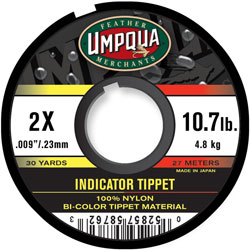 knot. Feel free to play around with the leader formula (lengths and sizes), but I find this setup works exceptional well for me on all sizes of trout water. If you’ll be fishing a shorter fly rod, you might find it easier to use a 7.5′ 0X leader instead, and shorten up the high-vis section of mono a little.
knot. Feel free to play around with the leader formula (lengths and sizes), but I find this setup works exceptional well for me on all sizes of trout water. If you’ll be fishing a shorter fly rod, you might find it easier to use a 7.5′ 0X leader instead, and shorten up the high-vis section of mono a little.
If you review the leader diagram above, you’ll see that the high-vis mono section (called the “sighter”) is used for detecting strikes and replaces the floating strike indicator found in traditional nymph rigs.
At the tippet end, I use a lot of different combinations as far as fly placement goes. It is preferable in most situations to use two flies in the Czech nymphing rig, one heavy anchor fly (attached at the end of the tippet), and one slightly smaller or lighter fly above, tied off the tippet tag of a triple surgeons or blood knot. Flies can be attached several different ways as well, but I prefer mine to be tied on tags approximately 20 inches apart. Some anglers may prefer to tie off to the hook bend, and that’s perfectly fine. Lastly, many anglers utilize tippet rings at the end of the high-vis mono and at the tippet section of the leader to tie on the nymphs. This lengthens the life of the rig, makes it faster to change out flies or re-rig when you break off.
With a Czech nymphing rig, the long leader allows you to keep everything out of the water except for the tippet section of the leader during the drift, and the small diameter of the fluorocarbon tippet allows your flies to sink into the strike zone very quickly. In laymen terms, you’re able to almost completely eliminate the drag that plague the strike indicator and thick butt section of the leader it’s attached to. And since you don’t have any drag, it’s much easier to keep your flies moving slower and drifting more natural in the current. Trout are more likely to eat artificial flies if they’re moving the same speed as the naturals in the current.
I typically start out with my anchor fly on the bottom of the rig, and more times than not, it’s a size 10 hares ear variation with a 4mm tungsten bead. My second fly (tied on the tag, 20″ above) most often is a size 16 pheasant tail variation, with a tungsten bead (2.4-3.2mm). If I’m fishing a knee deep riffle or run, I will usually run the anchor up top with the smaller fly trailing on the bottom of the rig (This setup helps to keep the rig from snagging). Play around with different combinations, because experimenting catches fish!
During the drift, keep a close eye on the sighter, and if it twitches, straightens or stops, set the hook. Because you’ll have a pretty tight connection with the Czech nymphing leader, lots of times you’ll actually feel the fish eat your flies (bump, bump, bump). When my drift is about to come to an end, as my flies begin to swing, I like to give the rod a little wrist snap backwards (it’s like a short hook set), which helps me from missing those last second bites that you often get when your picking up your rig to make another presentation. Once, you’ve performed the wrist snap, raise your rod tip and rig to the surface, and send your flies upstream for another drift. Grid the water off, fish the water closest to you first, and every half dozen drifts move your drift closer to the opposite bank. Try to cover every inch of the run, because sometimes in this type of water, trout have very small feeding lanes and won’t move very far to feed.
I hope some of you will give this technique a try. If you put in some time and experiment with it, I think you’ll find it a pretty satisfying way to nymph fish, and I promise you’ll connect with trout that would otherwise still be sitting on the bottom.
I like to use Hanak Czech Nymph hooks made by Umpqua. They’re used heavily in competition fly fishing, hook gaps are good size, barbless and have super sharp hook points. A lot of times I’ll use jig hooks like the Umpqua C400BL for my anchor flies because they give a little more up and down action with the fly in the water, and they snag on the bottom a little less. Lastly, the Umpqua TMC 2499SP-BL is a great curved short shank hook that I tie all kinds of wet flies with. It’s 2x heavy, 3X wide, and has a razor sharp point. There’s lots of great hooks out there for Czech nymphing, but these specific hook recommendations have served me well over the years.
Do you suggest building the Czech nymphing leader with 100% fluorcarbon?
I really don’t think there’s a need to use fluorocarbon for the entire leader, because the tippet section of the leader is really the only part of the leader in the water, and that’s the only place I use fluorocarbon in my Czech nymphing rig.
How would you modify your Czech nymphing rig if you wanted to fly fish shallower pocket water?
When I do find myself Czech nymphing this type of water, I’ll usually go with a single fly, and shorten the tippet section of the leader from six feet to three feet. In situations where I’ve got lots of conflicting currents, I think a single fly can sometimes provide me a better drift because with two flies, they can get pulled in different directions at times. One fly is also easier to keep from getting snagged up. I’ll also lighten the weight of my fly as well when I’m Czech nymphing shallower water.
What’s a couple common mistakes you see first time Czech nympher doing on the water?
They have too much slack in their line during the drift or they try to make too long of presentations, with their flies drifting too far away from them. You really want the majority of your rig floating under your rod tip during the drift to maximize your ability to stay in constant contact with your flies.
If the fish don’t seem to be eating on the dead drift, what tips would you give an angler?
I would try jigging the flies a little during the drift and using a Leisenring lift at the end of thedrift.
Does this Czech nymphing leader help you in spooky fish situations?
Yes, for starters it’s significantly longer than your average size tapered trout leader. This helps you present your flies with much more stealth, because your fly line doesn’t really ever come into play (only have a foot or two of fly line out the rod tip when your fishing). Lastly, for those extra spooky, flat water situations, you can tie on a dry fly (also can add a tiny nymph dropper) and my Czech nymphing leader is capable of laying out extremely delicate presentations out to 30 feet with no problems.
Would you consider your personal Czech nymphing rig to be more like a hybrid euro nymphing rig?
Yes, it’s length makes it sort of a cross between a traditional Czech nymphing rig and a French nymphing rig. French nymph rigs are about twice as long.
What’s a few of your favorite Czech nymphing patterns?
Hares ear variation, frenchie, and surveyor are a few of my go-to patterns. I of course use lots of other fly patterns, but day in and day out, these three produce consistently. I also substitute the dubbing colors in the patterns, specifically the hotspots at the thorax. Some color variations work better at different times of the year.
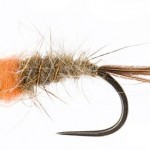
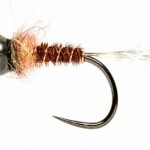
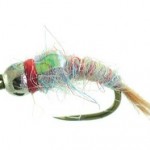
Czech it Out!
I often have clients ask me about my fishing style when I mention I normally don’t use strike indicators when I’m nymph fishing. Currently, there seems to be a growing interest with indicator-free nymphing for trout, so I was pretty excited when Kent asked me to write a post for the G&G readers about Czech nymphing. There’s many different styles and tactics out there for catching trout without strike indicators, but the primary method that comes to mind for most fly fishermen, is Czech nymphing. When you strip away everything to the bare bones, Czech nymphing is very similar to the traditional American tactic of high-sticking with nymphs. The only real difference lies in the rig setup and you don’t use a floating strike indicator.First, let’s talk about the type of fly rod I prefer to use when I’m Czech nymphing. I find that long and light fly rods work the best, with my favorite Czech nymphing rod being the Echo Shadow PE, 10 1/2′ 3wt. You can Czech nymph with any length rod, but it’s definitely easier to manage the rig with a longer than average fly rod. The main reason longer fly rods are preferred, is because the normal leader setup you fish with when Czech nymphing, is generally much longer than your traditional 9′ tapered nylon or fluorocarbon leaders. I’ve experimented with lots of variations in Czech leader setups over the years, but there’s one that I keep coming back to because it’s simple, and it allows me to fish multiple styles with the same leader setup.
I start with a nine foot, 0X tapered leader, then I attach 20 inches of 2X high-vis mono (I prefer Umpqua Indicator Tippet), followed by three to six feet of 4X fluorocarbon tippet. The sections are tied together using a triple surgeons knot, but you can also use a blood
 knot. Feel free to play around with the leader formula (lengths and sizes), but I find this setup works exceptional well for me on all sizes of trout water. If you’ll be fishing a shorter fly rod, you might find it easier to use a 7.5′ 0X leader instead, and shorten up the high-vis section of mono a little.
knot. Feel free to play around with the leader formula (lengths and sizes), but I find this setup works exceptional well for me on all sizes of trout water. If you’ll be fishing a shorter fly rod, you might find it easier to use a 7.5′ 0X leader instead, and shorten up the high-vis section of mono a little.If you review the leader diagram above, you’ll see that the high-vis mono section (called the “sighter”) is used for detecting strikes and replaces the floating strike indicator found in traditional nymph rigs.
At the tippet end, I use a lot of different combinations as far as fly placement goes. It is preferable in most situations to use two flies in the Czech nymphing rig, one heavy anchor fly (attached at the end of the tippet), and one slightly smaller or lighter fly above, tied off the tippet tag of a triple surgeons or blood knot. Flies can be attached several different ways as well, but I prefer mine to be tied on tags approximately 20 inches apart. Some anglers may prefer to tie off to the hook bend, and that’s perfectly fine. Lastly, many anglers utilize tippet rings at the end of the high-vis mono and at the tippet section of the leader to tie on the nymphs. This lengthens the life of the rig, makes it faster to change out flies or re-rig when you break off.
Where I Czech Nymph Most
It’s best to look at Czech nymphing as a niche way to fly fish with nymphs. It’s suited best for specific water types. I use it only when the right opportunity presents itself, and most of the time it’s when I’m fly fishing mid-thigh to waist deep riffles and plunge pools. I’m not saying you can’t use it in other water types, but I find that this is where Czech nymphing is most effective. One of the reasons for targeting this type of water without an indicator, is that the water speed on the surface and the water speed where the fish are hanging out (often very close to the bottom), are quite different. Trout often sit on the bottom of the river or stream in these places, where the current is slowed significantly by friction from the irregular riverbed and other underwater cover. When you fish a traditional indicator rig in this type of water, a lot of the time, it’s extremely difficult to keep the fast water on the surface from grabbing and pulling on the indicator during the drift. The drag created causes your flies to speed up and rise in the water column, and a lot of the time you’ll find that your flies never make it down to where the trout are holding.With a Czech nymphing rig, the long leader allows you to keep everything out of the water except for the tippet section of the leader during the drift, and the small diameter of the fluorocarbon tippet allows your flies to sink into the strike zone very quickly. In laymen terms, you’re able to almost completely eliminate the drag that plague the strike indicator and thick butt section of the leader it’s attached to. And since you don’t have any drag, it’s much easier to keep your flies moving slower and drifting more natural in the current. Trout are more likely to eat artificial flies if they’re moving the same speed as the naturals in the current.
I typically start out with my anchor fly on the bottom of the rig, and more times than not, it’s a size 10 hares ear variation with a 4mm tungsten bead. My second fly (tied on the tag, 20″ above) most often is a size 16 pheasant tail variation, with a tungsten bead (2.4-3.2mm). If I’m fishing a knee deep riffle or run, I will usually run the anchor up top with the smaller fly trailing on the bottom of the rig (This setup helps to keep the rig from snagging). Play around with different combinations, because experimenting catches fish!
Czech Nymphing Technique
Now that we’ve covered the rig and I’ve laid out the basics of why and where you should Czech nymph, let’s talk about the technique. Czech nymphing is basically short casts and short drifts right under the rod tip. The good thing about fishing the previously mentioned water types, is they allow you to get a little closer to the trout without spooking them. Most of the time you’ll want to position yourself perpendicular to the water your Czech nymphing, and you should keep in mind, that most of your presentations will be less than 15 feet upstream (anymore and you’ll find it hard to manage your rig properly). You should only have a foot or so of fly line out the end of the rod tip during your presentation and drift, sometimes none at all. Bring your rod tip up and your flies to the surface, like you’re going to roll cast, and lob the flies upstream. Now that your flies are in the water, lift the rod tip until your high-vis mono sighter is six inches off the water, then you’ll want to begin slightly leading your flies through the drift with your rod tip. The line between your rod tip and the sighter should be fairly straight, and the rod tip should be tracking just in front of the sighter. Bare in mind, this is going to take some getting used to, if you’ve never Czech nymphed before. With some practice, it will become very fluid and second nature to you.During the drift, keep a close eye on the sighter, and if it twitches, straightens or stops, set the hook. Because you’ll have a pretty tight connection with the Czech nymphing leader, lots of times you’ll actually feel the fish eat your flies (bump, bump, bump). When my drift is about to come to an end, as my flies begin to swing, I like to give the rod a little wrist snap backwards (it’s like a short hook set), which helps me from missing those last second bites that you often get when your picking up your rig to make another presentation. Once, you’ve performed the wrist snap, raise your rod tip and rig to the surface, and send your flies upstream for another drift. Grid the water off, fish the water closest to you first, and every half dozen drifts move your drift closer to the opposite bank. Try to cover every inch of the run, because sometimes in this type of water, trout have very small feeding lanes and won’t move very far to feed.
I hope some of you will give this technique a try. If you put in some time and experiment with it, I think you’ll find it a pretty satisfying way to nymph fish, and I promise you’ll connect with trout that would otherwise still be sitting on the bottom.
Czech Nymping Q & A
What’s your favorite style hook you like to fish when you’re Czech nymphing?I like to use Hanak Czech Nymph hooks made by Umpqua. They’re used heavily in competition fly fishing, hook gaps are good size, barbless and have super sharp hook points. A lot of times I’ll use jig hooks like the Umpqua C400BL for my anchor flies because they give a little more up and down action with the fly in the water, and they snag on the bottom a little less. Lastly, the Umpqua TMC 2499SP-BL is a great curved short shank hook that I tie all kinds of wet flies with. It’s 2x heavy, 3X wide, and has a razor sharp point. There’s lots of great hooks out there for Czech nymphing, but these specific hook recommendations have served me well over the years.
Do you suggest building the Czech nymphing leader with 100% fluorcarbon?
I really don’t think there’s a need to use fluorocarbon for the entire leader, because the tippet section of the leader is really the only part of the leader in the water, and that’s the only place I use fluorocarbon in my Czech nymphing rig.
How would you modify your Czech nymphing rig if you wanted to fly fish shallower pocket water?
When I do find myself Czech nymphing this type of water, I’ll usually go with a single fly, and shorten the tippet section of the leader from six feet to three feet. In situations where I’ve got lots of conflicting currents, I think a single fly can sometimes provide me a better drift because with two flies, they can get pulled in different directions at times. One fly is also easier to keep from getting snagged up. I’ll also lighten the weight of my fly as well when I’m Czech nymphing shallower water.
What’s a couple common mistakes you see first time Czech nympher doing on the water?
They have too much slack in their line during the drift or they try to make too long of presentations, with their flies drifting too far away from them. You really want the majority of your rig floating under your rod tip during the drift to maximize your ability to stay in constant contact with your flies.
If the fish don’t seem to be eating on the dead drift, what tips would you give an angler?
I would try jigging the flies a little during the drift and using a Leisenring lift at the end of thedrift.
Does this Czech nymphing leader help you in spooky fish situations?
Yes, for starters it’s significantly longer than your average size tapered trout leader. This helps you present your flies with much more stealth, because your fly line doesn’t really ever come into play (only have a foot or two of fly line out the rod tip when your fishing). Lastly, for those extra spooky, flat water situations, you can tie on a dry fly (also can add a tiny nymph dropper) and my Czech nymphing leader is capable of laying out extremely delicate presentations out to 30 feet with no problems.
Would you consider your personal Czech nymphing rig to be more like a hybrid euro nymphing rig?
Yes, it’s length makes it sort of a cross between a traditional Czech nymphing rig and a French nymphing rig. French nymph rigs are about twice as long.
What’s a few of your favorite Czech nymphing patterns?
Hares ear variation, frenchie, and surveyor are a few of my go-to patterns. I of course use lots of other fly patterns, but day in and day out, these three produce consistently. I also substitute the dubbing colors in the patterns, specifically the hotspots at the thorax. Some color variations work better at different times of the year.



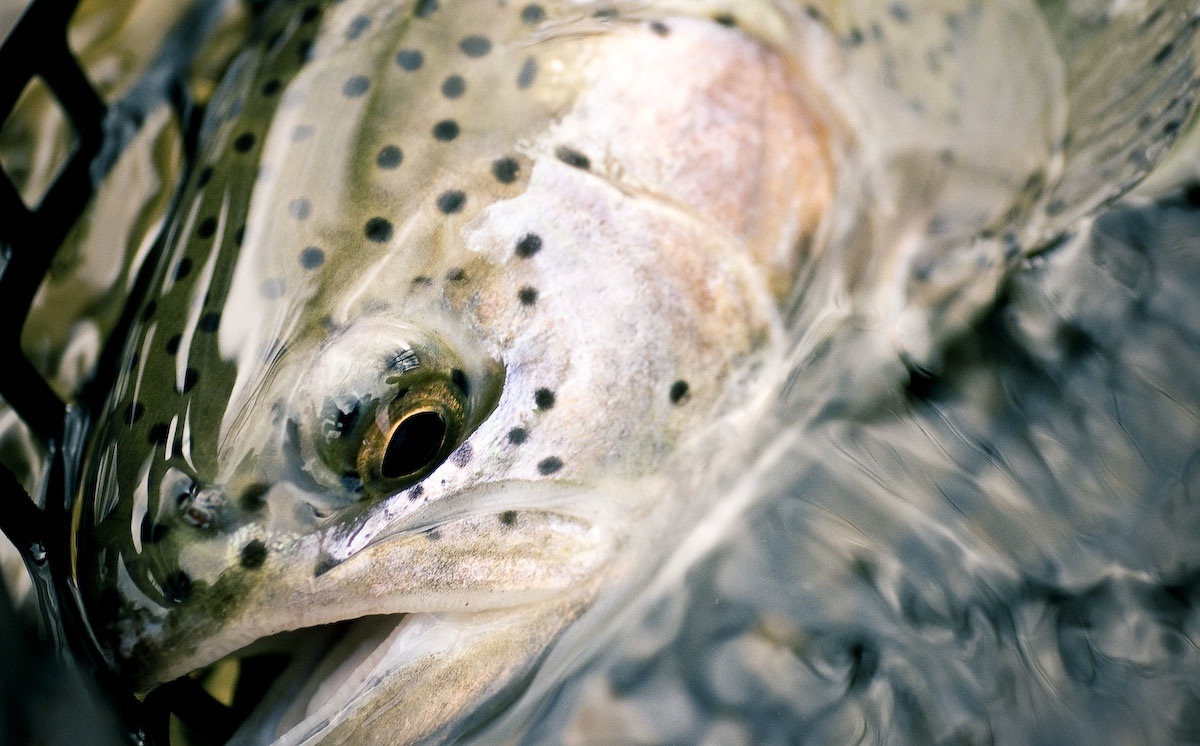
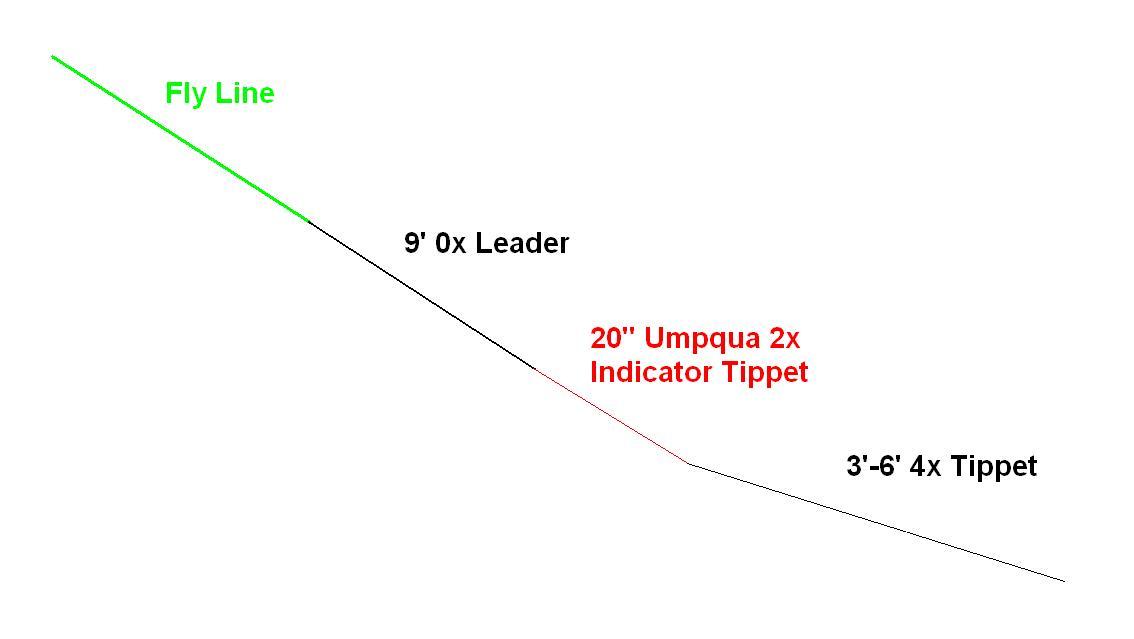
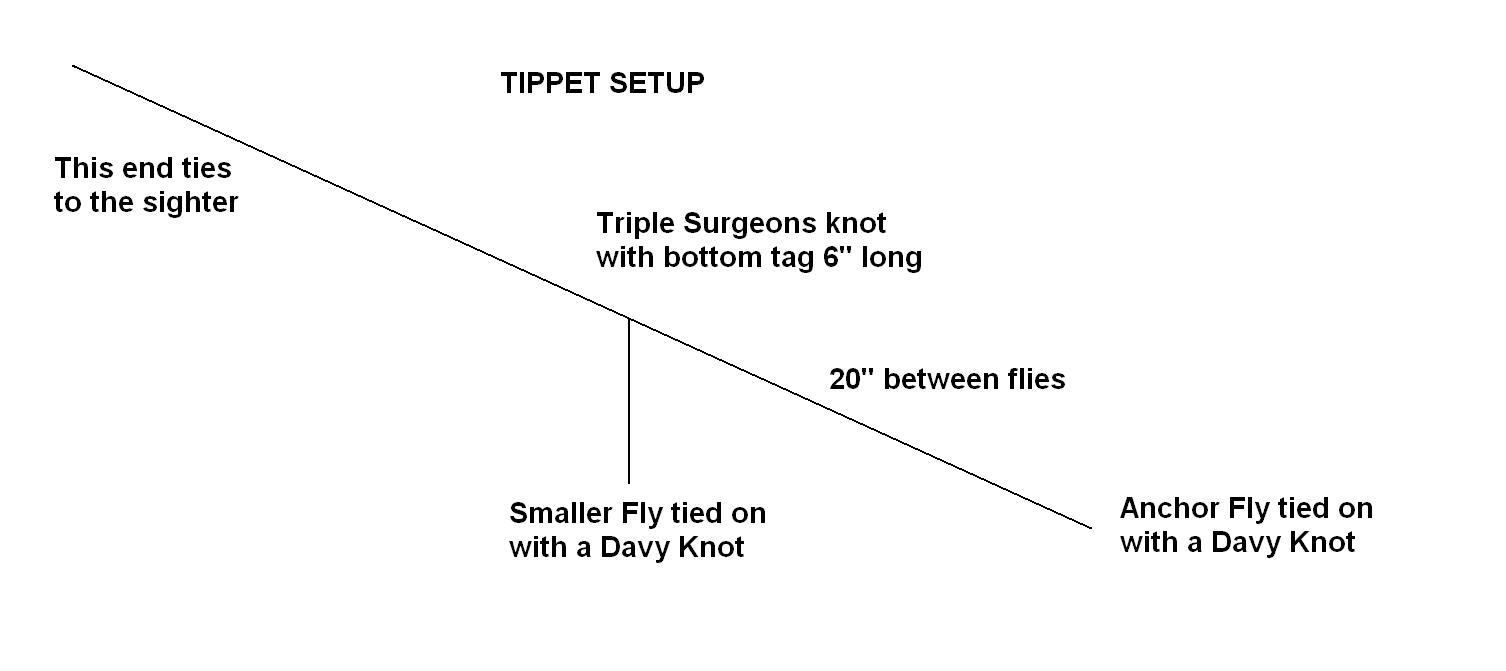
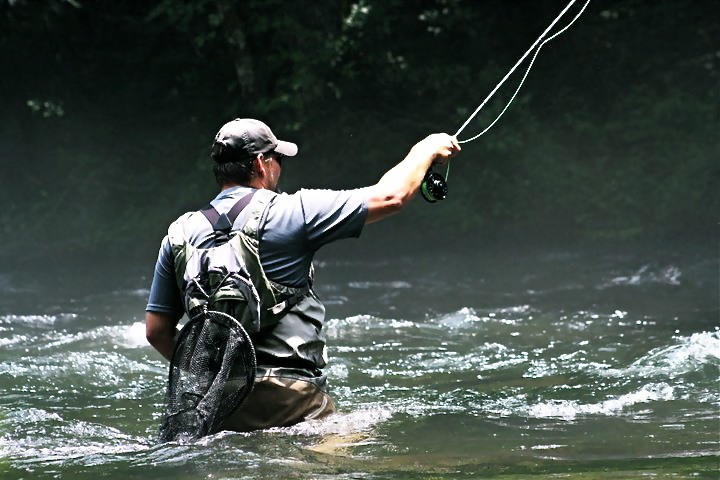

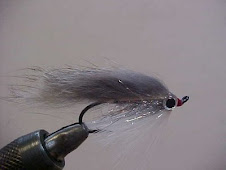










No comments:
Post a Comment